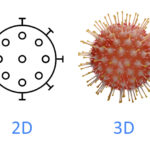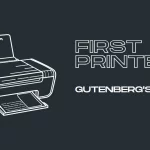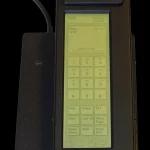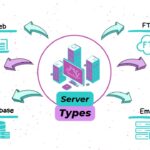Welcome to the realm of IoT, where the convergence of advanced connectivity and intelligence is reshaping businesses across all industries. In this article, we will take a look at ten ways businesses can use IoT to attain unparalleled efficiency. Our focus here will be on practical solutions that address real-world business needs from elevating customer experiences to streamlining operations. By the end of this journey, you’ll be armed with the tools necessary to propel your business to new heights.
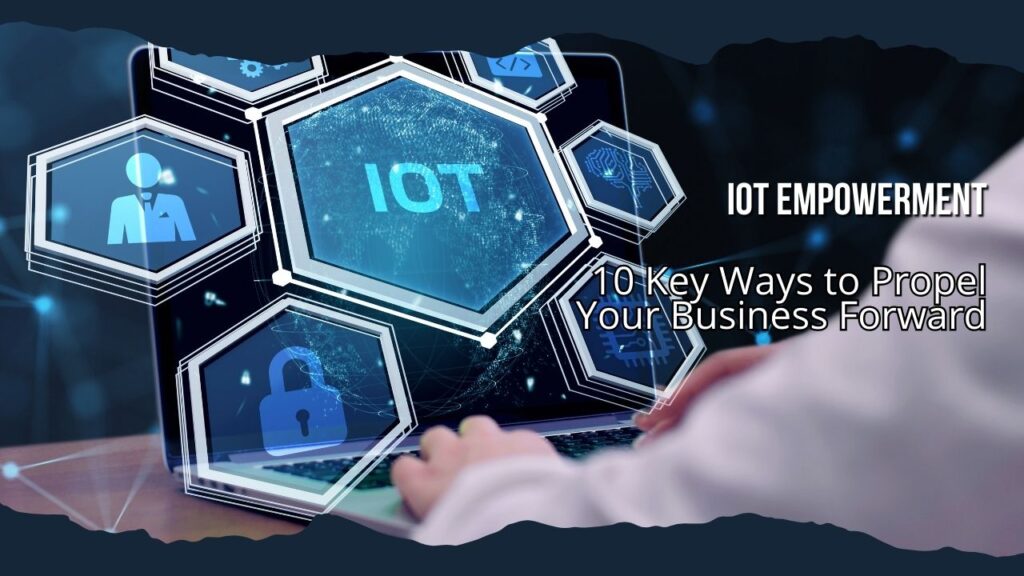
Table of Contents
What is IoT Exactly?
Imagine a digital ecosystem where objects around us are equipped with the ability to interact and share insights effortlessly. This is precisely what the Internet of Things (IoT) accomplishes. It creates a network of interconnected devices, such as smart sensors, machines, and vehicles, all collaborating in perfect synergy. They collect and exchange data, just like colleagues collaborating on a project, but instead, these objects work together to provide us with valuable information. This rich stream of information becomes the foundation for smart decision-making in businesses.
Whether it’s optimizing processes in a factory, tracking inventory in a warehouse, or enhancing customer experiences in a retail setting, IoT enables businesses to harness data in new ways. Thus, businesses can automate repetitive tasks, streamline operations, and achieve greater efficiency.
4 Popular Types of IoT
From empowering individuals with smart devices to revolutionizing industries and urban spaces, IoT presents a diverse array of opportunities to shape a more connected and intelligent future. Here are the four popular types of Internet of Things solutions.
- Consumer
From smart home assistants that respond to our voice commands to wearable fitness trackers that monitor our health, consumer IoT enriches our experiences with convenience and connectivity. Whether it’s adjusting the thermostat remotely or receiving notifications on our smartphones, it helps consumers to stay connected and in control.
- Commercial
Retail stores use IoT-enabled beacons to deliver personalized offers to customers, while logistics companies employ sensors to track shipments in real time. Such solutions empower businesses to stay competitive in the fast-paced digital landscape.
- Industrial
In industrial settings, sophisticated industrial iot software is used to monitor and optimize machinery, streamline production processes, and ensure worker safety. It paves the way for predictive maintenance, where machines can identify potential failures before they occur and minimize downtime.
- Infrastructure
Infrastructure IoT forms the backbone of smart cities and urban development. With smart traffic management, cities can reduce congestion and enhance transportation efficiency. Plus, it helps to monitor and manage energy consumption, promoting sustainability and resource optimization.
10 Ways Businesses Can Use IoT
Smart inventory management: Wave goodbye to inventory woes!
IoT-enabled sensors can monitor stock levels, automatically trigger reorders, and provide real-time tracking. As a result, your business will never run low on essential supplies. From retail to warehouse shelves, this smart solution optimizes inventory and minimizes stockouts.
Example: A supermarket uses IoT sensors to monitor perishable goods’ freshness. When stock levels decline, the system places an order with suppliers. This way, shelves are always stocked with fresh produce.
Enhanced customer experience: Delight your client!
Devices such as beacons and smart displays create personalized shopping experiences and offer targeted promotions based on customer preferences and behaviors. This leads to increased customer satisfaction and loyalty.
Example: A high-end fashion boutique uses special beacons to send exclusive offers and personalized styling tips to customers’ smartphones as they browse through the store.
Energy efficiency and sustainability: Be a green champion!
Smart energy systems optimize energy consumption by analyzing usage patterns and making real-time adjustments. This not only reduces environmental impact but also cuts energy costs significantly.
Example: An office building adopts smart lighting and temperature controls to automatically adjust energy usage based on occupancy. Very soon, this leads to substantial energy savings.
Predictive maintenance: Bid farewell to unexpected breakdowns!
IoT sensors monitor equipment health and performance, detecting potential issues before they escalate. Predictive maintenance minimizes downtime, extends machinery lifespan, and reduces maintenance costs.
Example: An airline utilizes IoT sensors on its aircraft engines to collect real-time data on performance. This allows the airline to schedule maintenance proactively. By doing so, it avoids costly delays and ensures passenger safety.
Fleet management: Rule the roads with precision!
IoT-equipped vehicles and logistics systems optimize routes, monitor vehicle conditions, and streamline delivery processes. This results in efficient transportation, reduced fuel consumption, and timely deliveries.
Example: A delivery company deploys devices in its delivery vans to track routes and driving patterns. Thanks to this, they plan efficient routes and reduce fuel consumption.
Workplace safety: Put employee well-being first!
Wearable devices and smart safety equipment monitor workers’ health, detect potential hazards, and ensure compliance with safety protocols. A safer workplace boosts productivity and morale.
Example: A construction company equips its workers with IoT-enabled helmets that monitor vital signs and detect dangerous conditions. Supervisors receive alerts in real-time to prevent accidents.
Asset tracking: Never lose sight of your assets!
IoT-enabled trackers keep tabs on valuable equipment, machinery, and inventory. This helps businesses to locate and manage assets.
Example: A logistics company uses trackers on shipping containers to monitor their location and condition during transit. By doing so, it prevents loss and ensures timely deliveries.
Personalized marketing insights: Unleash the power of data!
IoT devices collect customer data and behavior patterns. These enable businesses to craft personalized marketing campaigns.
Example: A coffee shop deploys IoT-enabled loyalty cards that track customer visits and preferred drinks. With this data, the shop offers tailored promotions and enhances customer engagement.
Smart agriculture: Harvest the bounty of innovation!
IoT devices and sensors monitor soil conditions, weather patterns, and crop health. This helps to optimize irrigation, fertilization, and pest control.
Example: A farm implements IoT-powered sensors to monitor soil moisture levels. The system automatically adjusts irrigation to ensure crops receive the perfect amount of water, leading to healthier yields.
Remote control: Conquer distance effortlessly
Remote monitoring systems allow businesses to oversee and control operations from afar, increasing efficiency and reducing the need for on-site personnel.
Example: An energy company employs remote monitoring to control and optimize its wind turbines‘ performance. This results in improved energy production and reduced maintenance costs.
Final Thoughts
And there you have it — ten ways you can wield the power of IoT to transform your business and reach new heights of success. Embrace IoT innovation, and, soon enough, you’ll witness your operations thrive with newfound efficiency and productivity. So, let the Internet of Things lead you to a future where the impossible becomes possible. Happy exploring!
